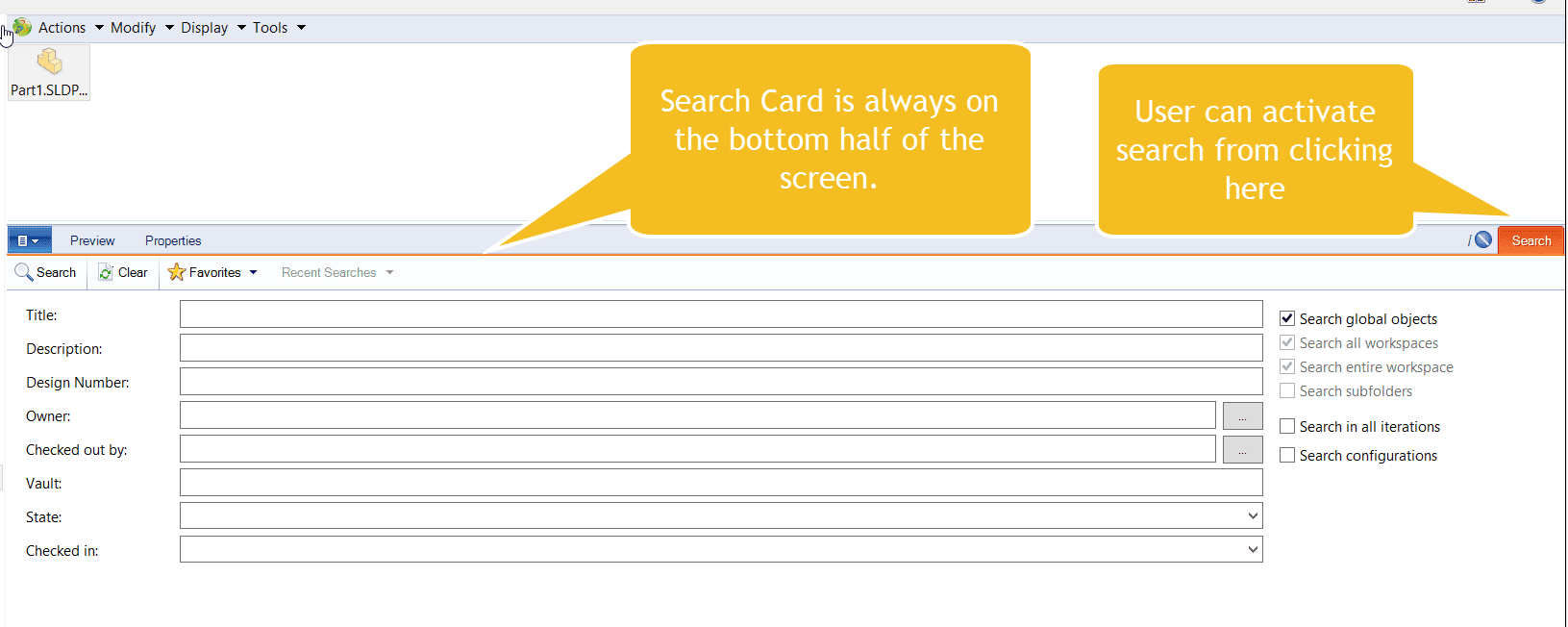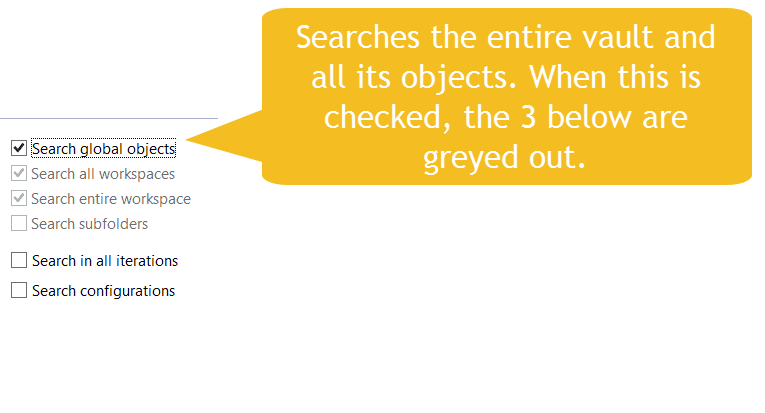ENOVIA Search Card - What is it and how to
What is the ENOVIA Search Card?
The ENOVIA Search Card is a tool contained within the SOLIDWORKS and WINDOWS Integration of ENOVIA. It is used to search SOLIDWORKS parts, assemblies and drawings inside the vault from within the integration itself. Out of the box, it is important to note that the integration only handles SOLIDWORKS file types, therefore the Search Card will be limited to only show those results. The Search Card can be found inside of your Windows Explorer once the user has clicked the 3DEXPERIENCE icon and logged in.

When the user first logs into the system and before the user selects anything, the card should be the first thing to be seen on the bottom half of the screen. The user can also at any point activate the Search Card by clicking the search button on the right side of the screen.
How to use the ENOVIA Search Card
Once the user activates the search card by either logging in the first time or clicking the search button on the right-hand side, searching is as simple and filling out the information you are looking for. OOTB, the user has the options to search Title, Description, Design Number, Owner, Checked Out By, Vault, State, or Check in By. These search criteria may vary from system to system depending on the configuration and how these attributes have been tied to SOLIDWORKS.

Once the user has filled out the necessary fields, clicking the “Search” button in the top left corner will activate it and the results will populate in the top half of the screen. Clicking “Clear” will clear the entire Search Card. If there is a common search that the user does often, it can be saved as a favorite. Once the user has performed a search, it can be saved into the Favorites by selecting the “Favorites” button and clicking “Add Favorite”. The user can also organize their favorites from here too.

On the right side of the card, you will notice that there are a few check boxes for search options. OOTB, the standard checkboxes that are always selected are Search Global Objects, Search All Workspaces, and Search Entire Workspace. Below is a break down off all their meanings.

Search Global Objects – Searches all objects, whether object is floating or tied to workspace
Search All Workspaces – Searches all workspaces only
Search Entire Workspace – Search entire workspace, not just particular location the user is currently in
Search Subfolders – Search all subfolders from the user’s location downward
Search in all Iterations – Searches all iterations (used for specific attributes that may have changed in Iterations)
Search Configurations – Searches all Configurations (used for specific attributes that may have changed in different attributes)
Customize Your Search Card
Search Cards are 100% completely customizable. Administrators can change the look and the attributes associated with the card at any point. It’s very common to customize a card to be very similar to drawing or part cards. This way attributes entered on other cards may be searched here, offing a higher chance of finding what users are looking for much more accurately.

Tips and Tricks
- It’s a best practice to create a search favorite showing what a user has a checked out. This ensures that users don’t have things checked out that they should not have. It also allows users to check in files more frequently thus ensuring that they are backed up in the vault should anything happen to local cache. Also, a best practice to ensure that if a user is going to be gone for an extended period that their files are checked in and available for other work on in their absence.
- For 95% of searches, the OOTB search boxes on the right-hand side will get things done. Only times to consider changing them is for specific attribute searches that are configuration or iteration specific, or if the vault search is so broad that the user experiences slow search times. Careful selecting the search iterations and configurations boxes as it broadens a search significantly. When these are not selected, the search default to the “@” tab values, or family values of the file. Selecting them will search every configuration associated with that file.
- It’s a best practice to start your search broader and then narrow it down gradually. If the user knows exactly the part number they are looking for then this does not apply. If the user is looking for something and they do not know that name, begin large and chip away at the search results. The search card works a Boolean function, meaning that the results much match the criteria exactly. If you over specify and the part you are looking for does not have one of the values you input it will NOT show in the results.

 Blog
Blog